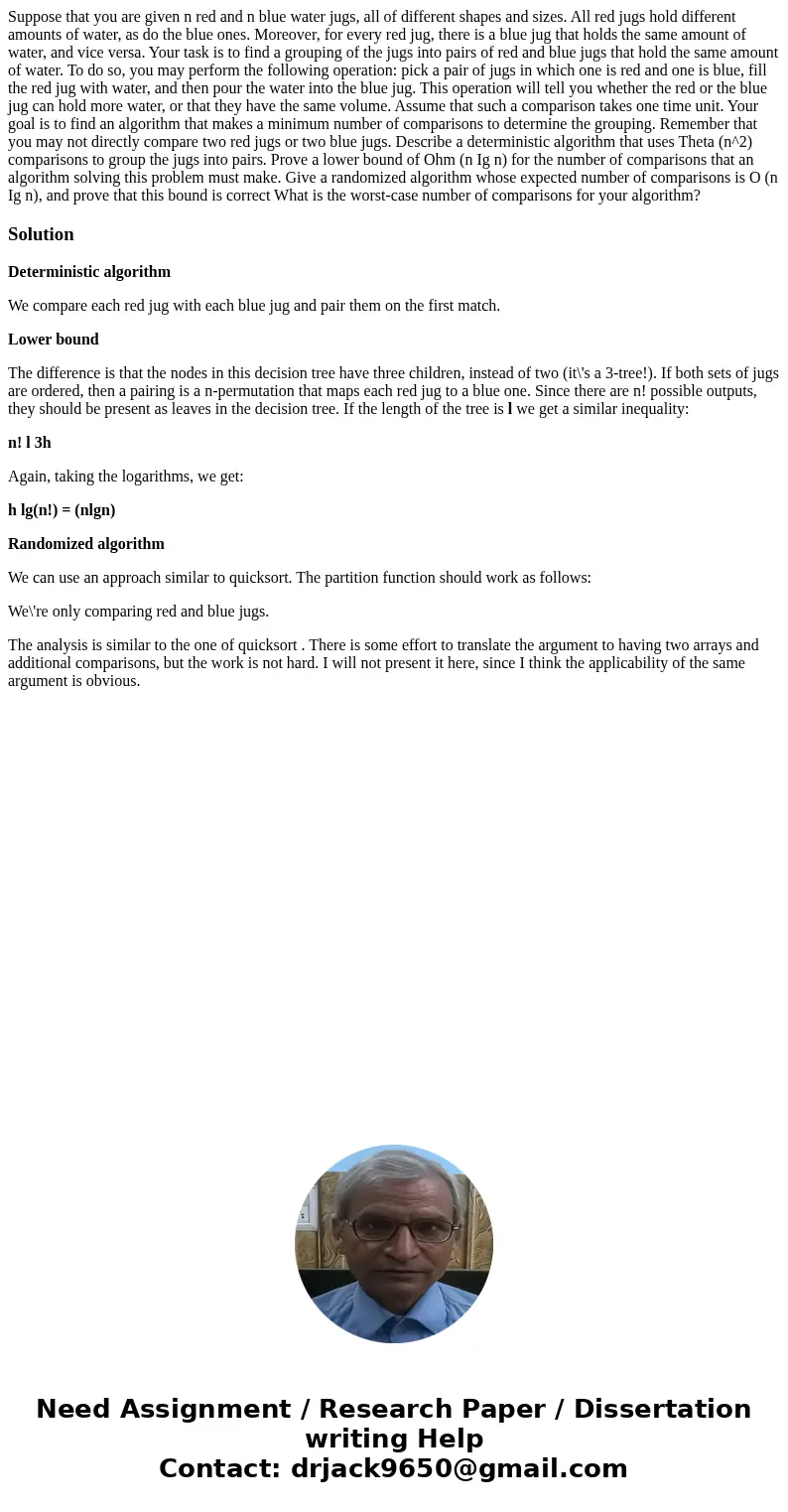Suppose that you are given n red and n blue water jugs, all of different shapes and sizes. All red jugs hold different amounts of water, as do the blue ones. Moreover, for every red jug, there is a blue jug that holds the same amount of water, and vice versa. Your task is to find a grouping of the jugs into pairs of red and blue jugs that hold the same amount of water. To do so, you may perform the following operation: pick a pair of jugs in which one is red and one is blue, fill the red jug with water, and then pour the water into the blue jug. This operation will tell you whether the red or the blue jug can hold more water, or that they have the same volume. Assume that such a comparison takes one time unit. Your goal is to find an algorithm that makes a minimum number of comparisons to determine the grouping. Remember that you may not directly compare two red jugs or two blue jugs. Describe a deterministic algorithm that uses Theta (n^2) comparisons to group the jugs into pairs. Prove a lower bound of Ohm (n Ig n) for the number of comparisons that an algorithm solving this problem must make. Give a randomized algorithm whose expected number of comparisons is O (n Ig n), and prove that this bound is correct What is the worst-case number of comparisons for your algorithm?
Deterministic algorithm
We compare each red jug with each blue jug and pair them on the first match.
Lower bound
The difference is that the nodes in this decision tree have three children, instead of two (it\'s a 3-tree!). If both sets of jugs are ordered, then a pairing is a n-permutation that maps each red jug to a blue one. Since there are n! possible outputs, they should be present as leaves in the decision tree. If the length of the tree is l we get a similar inequality:
n! l 3h
Again, taking the logarithms, we get:
h lg(n!) = (nlgn)
Randomized algorithm
We can use an approach similar to quicksort. The partition function should work as follows:
We\'re only comparing red and blue jugs.
The analysis is similar to the one of quicksort . There is some effort to translate the argument to having two arrays and additional comparisons, but the work is not hard. I will not present it here, since I think the applicability of the same argument is obvious.

 Homework Sourse
Homework Sourse